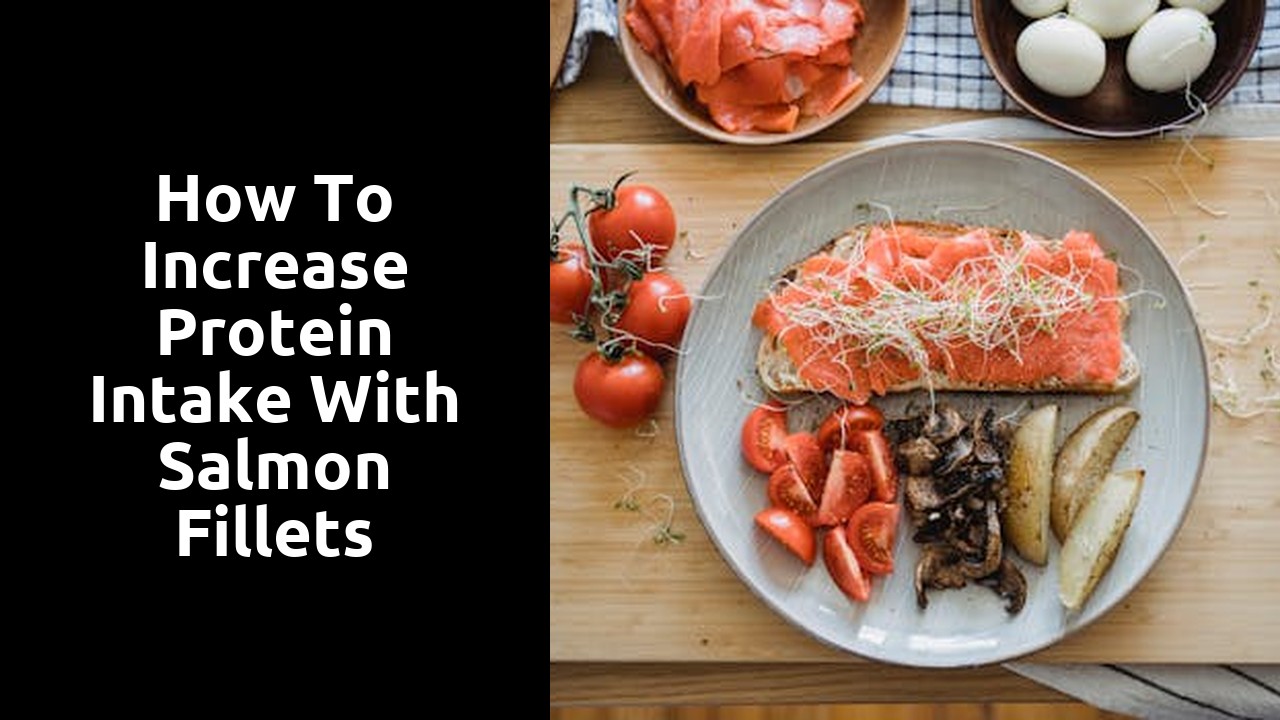How to Increase Protein Intake with Salmon Fillets

Recommended Serving Size for Salmon Fillets
When it comes to the recommended serving size for salmon fillets, the general guideline is around 3 to 4 ounces per serving. This portion size provides a good balance of protein while being mindful of overall caloric intake. For those with higher protein needs, you may consider increasing the serving to around 6 to 8 ounces, keeping in mind the additional calories that come with a larger portion.
It's worth noting that the serving size can vary depending on individual dietary requirements and activity levels. Athletes or individuals with specific fitness goals may require larger portions to meet their protein needs. However, for most people looking to increase their protein intake with salmon fillets, sticking to the 3 to 4-ounce range is a good starting point.
Portion Control Tips
When considering portion control with salmon fillets, it's important to be mindful of the recommended serving size. A typical portion of salmon is around 3-4 ounces, which is roughly the size of a deck of cards. This amount provides a good balance of protein intake without going overboard on calories and fat content.
An effective tip for controlling portions is to visually divide your plate into sections - allocate half of your plate to vegetables, one quarter to whole grains, and the remaining quarter to your salmon fillet. This visual aid not only helps in controlling portion sizes but also ensures a well-rounded and nutritious meal. By following these portion control tips, you can enjoy the benefits of salmon's high protein content without overindulging.
Buying Fresh Salmon Fillets
When buying fresh salmon fillets, it's important to pay attention to certain signs of quality to ensure you're getting the best product. Firstly, look for fillets that have a vibrant colour and a shiny appearance. Dull or faded fish may indicate it's not as fresh. Additionally, the flesh should be firm to the touch and bounce back when pressed slightly - this is a good indicator of freshness.
Furthermore, always check for any off-smells as fresh salmon should have a clean, briny scent of the ocean. Avoid fillets that have a strong fishy smell as this can signify the fish is past its prime. Lastly, if the skin is still intact, it should be smooth and shiny without any blemishes or discolouration. Trusting your senses and being selective when purchasing salmon fillets will ensure you are getting a high-quality product for your meals.
Signs of Freshness to Look For
Freshness is crucial when choosing salmon fillets for consumption. To ensure you are getting the best quality, look out for certain signs that indicate the fish is still fresh. Firstly, check the colour of the flesh - it should be vibrant and pink, with a slight sheen to it. Dull or discoloured flesh may indicate that the salmon is past its prime and not as fresh as you would like.
Another important aspect to consider is the smell of the salmon. Fresh salmon should have a clean and slightly briny smell, reminiscent of the sea. If it smells overly fishy or has a strong odour, it is likely not as fresh and may have started to spoil. Keeping an eye out for these signs can help you select the best salmon fillets for your meals, ensuring both quality and taste in every bite.
Comparison Between WildCaught and Farmed Salmon
When comparing wild-caught and farmed salmon, one noticeable difference lies in their diet. Wild-caught salmon feed on a natural diet of smaller fish and plankton, resulting in a richer flavour and a higher concentration of omega-3 fatty acids. On the other hand, farmed salmon are usually fed a diet of pellets containing fishmeal and fish oil, which may result in a milder taste and slightly lower omega-3 content.
Furthermore, the environmental impact of wild-caught versus farmed salmon is a crucial factor to consider. Wild-caught salmon fishing practices can sometimes lead to overfishing and bycatch of other marine species. In contrast, farmed salmon production may contribute to pollution of water bodies from excess fish waste and use of antibiotics. It is essential for consumers to weigh these factors when choosing between wild-caught and farmed salmon for their protein intake.
Environmental Impact
Salmon consumption can have a significant environmental impact, especially when considering how the fish is sourced. Wild-caught salmon is often seen as a more sustainable option as it relies on natural ecosystems for production. However, overfishing and habitat destruction are still major concerns that need addressing to ensure the long-term viability of wild salmon populations.
On the other hand, farmed salmon has gained popularity due to its availability and lower price point. Nevertheless, salmon farming comes with its own environmental challenges, such as pollution from waste products, the use of antibiotics, and the potential for disease transfer to wild populations. Consumers should be aware of these issues and weigh the environmental impact when choosing between wild-caught and farmed salmon.
Related Links
How to Cook Salmon Fillets for Maximum Protein ContentReview: The Nutritional Value of Salmon Fillets for Protein Intake
Roundup: The Best Salmon Fillet Recipes for Protein Lovers
Top 10 Protein-Rich Recipes Using Salmon Fillets
Why Salmon Fillets Are Beneficial for Brain Function
Why Salmon Fillets Are Essential for Heart Health